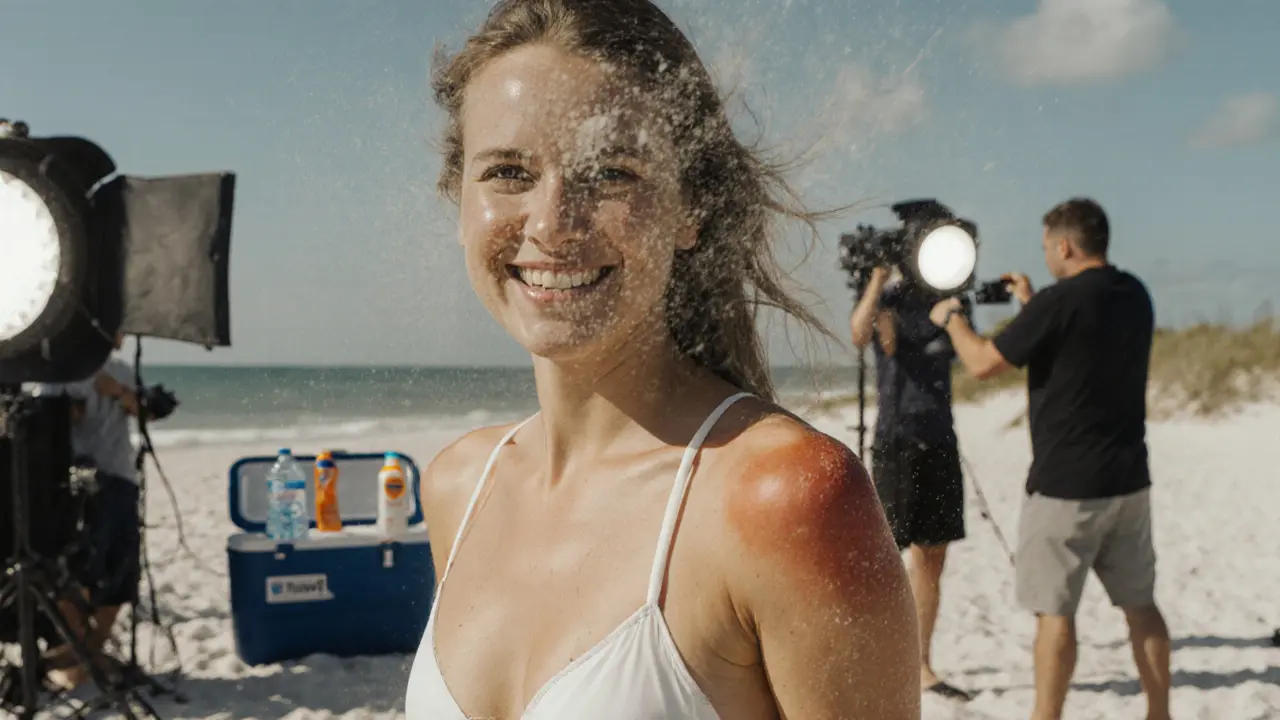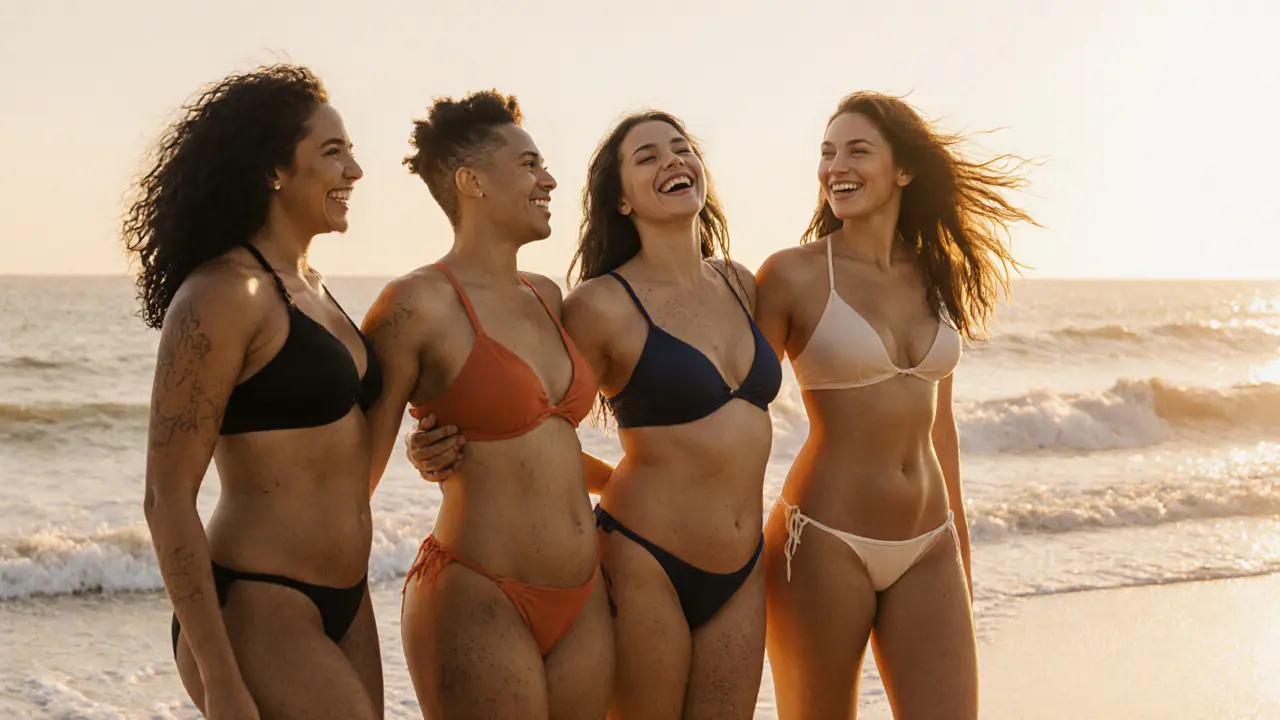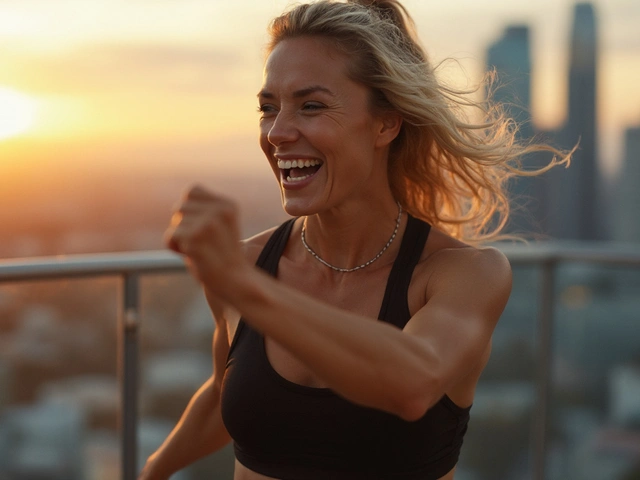Bikini Models: Style and Substance Beyond the Surface
You’ve seen them on billboards, in magazines, on social media feeds-bikini models with perfect tans, flawless smiles, and bodies that seem to defy gravity. But what’s really going on behind those photos? Is it all about looks, or is there more to it than just skin and swimsuits?
Let’s cut through the noise. Bikini modeling isn’t just about showing off a two-piece. It’s a mix of discipline, confidence, and business. And if you think it’s easy, think again.
What Exactly Is a Bikini Model?
A bikini model isn’t just someone who wears a swimsuit for photos. They’re professional models hired by brands to showcase swimwear, beach apparel, sunscreen lines, and resort lifestyles. Their job? To make you feel like you could step into that photo and instantly be vacation-ready.
These models work with fashion houses like Victoria’s Secret Swim, Speedo, Calvin Klein, and smaller independent swimwear brands. They appear in catalogs, digital ads, Instagram campaigns, and even TV commercials. Some even become brand ambassadors-long-term faces representing a line of products.
It’s not just about being thin or tan. The best bikini models have presence. They know how to pose, how to move, how to look natural in front of a camera while wearing very little. And yes, that takes training.
The Real Work Behind the Smile
Most people assume bikini models spend their days lounging on beaches. The truth? Their schedule looks more like a professional athlete’s.
- 4-6 days a week of strength training, especially core and glute work
- Daily cardio to maintain definition without bulk
- Strict nutrition plans-high protein, low processed sugar, careful hydration
- Hours spent in front of mirrors practicing poses
- Early morning shoots in freezing wind or scorching sun
- Long waits between setups while makeup and lighting get perfect
One model I spoke with, Lena, told me she once shot a 12-hour day on a beach in Florida. The wind was blowing sand into her eyes. Her bikini kept riding up. The sunburn started before lunch. But she kept smiling. That’s the job.
And it’s not just physical. Mental toughness matters too. Rejection is constant. You send out 50 portfolios. You get 2 callbacks. You book a gig, then get canceled last minute. You’re told you’re "too tall," "too curvy," "not exotic enough." It adds up.
Body Types in Bikini Modeling Today
Remember when bikini modeling meant one thing: super skinny, hourglass figure? That’s outdated.
Today’s industry celebrates diversity. Brands are shifting because consumers are. You’re seeing:
- Athletic builds-think surfers, CrossFit athletes, former gymnasts
- Curvy models-size 6 to 12, with real curves and stretch marks
- Tall and lean-6’0+ models who bring runway elegance to beachwear
- Maternal bodies-women who’ve had kids and still rock swimwear with pride
Brands like Savage X Fenty, Aerie, and Girlfriend Collective lead this change. They don’t airbrush out stretch marks or cellulite. They want real skin. Real stories.
It’s not just ethical-it’s smart business. A 2023 survey by McKinsey found that 72% of women aged 18-34 prefer brands that show diverse body types. That’s not a trend. That’s the new standard.

How Bikini Models Build Their Brand
These days, landing a magazine spread isn’t enough. The real power is in personal branding.
Top bikini models aren’t just models-they’re content creators. They post:
- Behind-the-scenes clips of photoshoots
- Workout routines on TikTok
- Meal prep videos with real food (not just kale smoothies)
- Stories about body image struggles
- Collaborations with fitness coaches and sustainable swimwear brands
Some even launch their own swimwear lines. Look at Chrissy Teigen-she didn’t just model for others. She built her own brand, Cravings by Chrissy, and it works because she’s real.
The most successful bikini models today don’t just sell swimsuits. They sell confidence. They sell the idea that you, too, can feel powerful in your skin.
The Dark Side: Pressure, Exploitation, and Mental Health
Let’s be honest: this industry has a shadow side.
Many young women enter modeling with dreams of glamour. They’re told, "You’re perfect," then later, "You need to lose 5 pounds." Some are pressured into extreme diets. Others face harassment on set. The pay isn’t always fair-many get paid per shoot, not per hour, and expenses (travel, hair, makeup) often come out of their pocket.
A 2024 report by the Model Alliance found that 41% of female models under 25 reported experiencing emotional abuse from agents or photographers. Only 12% reported it. Why? Fear of being blacklisted.
That’s why mental health support is becoming part of the conversation. Agencies like Wilhelmina and IMG now offer counseling services. Some models have started podcasts or YouTube channels to talk about recovery, boundaries, and self-worth.
It’s not all dark. But it’s not all sunshine and palm trees either.
What Makes a Great Bikini Model? It’s Not What You Think
Here’s the secret: the best bikini models aren’t the ones with the smallest waist. They’re the ones who know how to connect.
They make you feel something. Joy. Empowerment. Nostalgia. Freedom.
Look at Gigi Hadid’s swimwear campaigns. She doesn’t just pose. She laughs. She looks like she’s about to jump into the ocean. You want to be there with her.
That’s the difference between a photo and a moment.
Style? It’s in the way the fabric drapes. Substance? It’s in the story behind the eyes.

How to Tell If a Bikini Model Is Authentic
Not every model you see online is real. Here’s how to spot the difference:
- Real models show imperfections-freckles, scars, uneven tans
- They talk about their process-not just "I work out," but "Here’s how I recovered from an injury"
- They partner with ethical brands-sustainable fabrics, fair wages, no child labor
- They don’t use filters that erase their face-you can still recognize them without makeup
- They engage with comments-not just likes, but replies
If a model’s feed looks too perfect, too uniform, too staged-it’s probably not real. And if they’re selling "bikini body in 7 days" guides? Run.
What’s Next for Bikini Modeling?
The future isn’t about bigger biceps or smaller waists. It’s about authenticity.
More brands are hiring models over 30. More campaigns feature women with disabilities. More shoots happen in natural light, not studio setups. The goal? To show real people enjoying real moments in real swimwear.
Technology is helping too. AI tools now help brands visualize how swimwear looks on different body types-without needing to shoot 10 different models. That means more inclusion and less waste.
The next generation of bikini models won’t just be beautiful. They’ll be bold. They’ll speak up. They’ll demand better.
Final Thought: It’s Not About the Bikini
The bikini is just fabric.
The real story is the person wearing it.
Behind every bikini model is someone who got up at 5 a.m., pushed through doubt, fought for respect, and chose to show up-even when the world told them to hide.
That’s not just style.
That’s substance.
Are bikini models only young and skinny?
No. While traditional modeling standards once favored very young, slim bodies, the industry has shifted dramatically. Today, brands actively seek models of all ages, sizes, and body types-including curvy, athletic, maternal, and taller builds. Women in their 30s and 40s are now featured in major swimwear campaigns, and brands like Aerie and Savage X Fenty celebrate natural bodies with stretch marks, scars, and cellulite.
How much do bikini models typically earn?
Earnings vary widely. Entry-level bikini models might make $100-$500 per shoot, while top-tier models with large followings can earn $5,000-$20,000 per campaign. Brand ambassadors often get paid monthly retainers. Many models also earn through affiliate marketing, social media promotions, or launching their own swimwear lines. However, expenses like travel, styling, and photoshoot prep often come out of pocket, especially early on.
Do bikini models need to be professional models?
Not necessarily. Many bikini models start as fitness influencers, athletes, or even regular people with strong social media followings. Brands now prioritize authenticity over traditional modeling credentials. A strong Instagram presence, good lighting skills, and the ability to pose naturally can be just as valuable as a portfolio with top agencies.
Is bikini modeling safe for mental health?
It can be, but it carries risks. Constant pressure to meet unrealistic beauty standards, body shaming, and exploitation are real issues. However, many models now prioritize mental health by working with supportive agencies, seeking therapy, and using their platforms to advocate for body positivity. The industry is slowly improving, but self-awareness and boundaries are essential.
Can anyone become a bikini model?
Yes-more than ever. The industry no longer requires a specific body type, age, or background. If you’re confident, consistent, and willing to put in the work, you can build a career in bikini modeling. Start by building a genuine social media presence, connecting with ethical brands, and focusing on health over aesthetics. Authenticity is your greatest asset.




